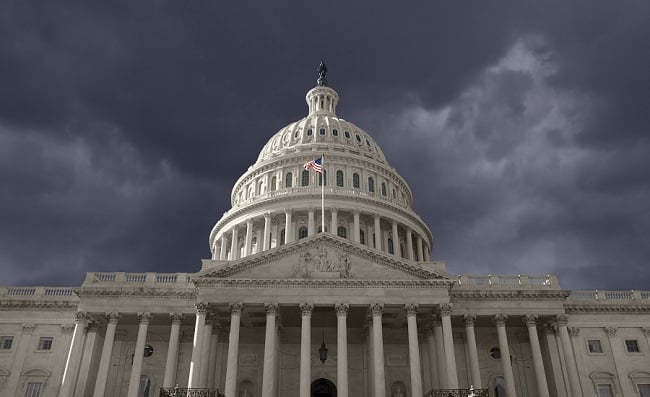 The Family Savings Act would add $20.97 billion to the total debt over the 10-year budget window, from 2019 to 2028, but that's a drop in the bucket compared to the cost of the Protecting Family and Small Business Tax Cuts Act, which would make permanent the tax cuts made in last year's Tax Cuts and Jobs Act. (Photo: Fotolia)
The Family Savings Act would add $20.97 billion to the total debt over the 10-year budget window, from 2019 to 2028, but that's a drop in the bucket compared to the cost of the Protecting Family and Small Business Tax Cuts Act, which would make permanent the tax cuts made in last year's Tax Cuts and Jobs Act. (Photo: Fotolia)
The retirement and savings incentives that make up the Family Savings Act, one of three bills the House Ways and Means Committee will mark up on Thursday, will add to the federal deficit, according to numbers released by the Joint Committee on Taxation.
All told, the bill would add $20.97 billion to the total debt over the 10-year budget window, from 2019 to 2028.
That's a drop in the bucket compared to the cost of the Protecting Family and Small Business Tax Cuts Act, which would make permanent the tax cuts to individuals and small businesses made in last year's Tax Cuts and Jobs Act. Those cuts will otherwise sunset in 2025.
Making the cuts permanent will add another $630.9 billion to the country's debt over the 10-year budget window.
That number is already getting blowback from fiscal hawks outside of Congress, with more surely to follow.
“This is a plan built on quicksand – sinking in the very debt that finances it. Not only will it add hundreds of billions to the deficit, but it may actually slow long-term growth, especially if recent spending increases are also made permanent,” said Maya MacGuineas, president of the Committee for a Responsible Federal Budget, in a press statement.
JCT's score of the cost of making individual and small business tax cuts permanent understates the true cost of the proposal, says CRFB, a non-partisan advocate for spending reform that's board of directors includes Democrat and Republican luminaries from previous Congresses and Administrations.
CRFB estimates the true cost of Tax Reform 2.0 will be $5 trillion over 20 years, accounting for interest payments on newly issued government debt needed to finance the tax cuts.
Supporters of Tax Reform 2.0 will counter that JCT's score fails to account for economic growth.
But with the retirement plan sponsorship and savings incentives built into the Family Savings Act, JCT's numbers seem to indicate the policies would incentivize greater participation in retirement plans and greater savings rates.
The biggest cost of the bill comes from Universal Savings Accounts, relaxed RMD rules, and Open Multiple Employer Plans, respectively.
Here is a breakdown of how JCT says those policies would impact the country's debt.
1. Universal Savings Accounts would add $8.6 billion to debt
USAs allow cash contributions up to $2,500 annually to investment savings accounts. Joint files may be able to contribute more.
The JCT does not explain why after-tax contributions would add to the deficit. Distributions from USAs would not be included as income—and would not be subject to capital gains taxes. Inquiries to economists were not returned before press time.
2. Relaxed RMDs would add $6.2 billion to debt
Under existing law, minimum distributions from traditional IRA and 401(k) accounts are required once account holders reach age 70 ½ (aka RMDs). Under the Family Savings Act, that requirement would be dropped for accounts with less than $50,000 in assets.
In a separate provision, the bill repeals the existing prohibition on contributions to traditional IRAs after age 70 ½ . JCT expects that will add $80 million to the debt over 10 years. Together, the provisions are aimed at addressing increasing mortality rates increasing retirement ages.
3. Open MEPs would add $3.7 billion to the debt
This may be good news, as it indicates that removing existing barriers to pooling multiple employers under one 401(k) could accelerate the adoption of more MEPs, bringing access to workplace retirement plans to more workers.
JCT sees the debt from the proposal increasing each year over the 10-year window, from $17 million in 2019 to $727 million by 2028.
Wider plan adoption means more pre-tax dollars invested in retirement savings accounts, which would explain the near-term lost revenue to federal coffers.
But here its limited 10-year outlook likely skews the JCT's numbers. What revenue is lost in the short term will ultimately be gained in the long term, as new retirement savers make withdrawals in retirement that are taxed as ordinary income.
© Touchpoint Markets, All Rights Reserved. Request academic re-use from www.copyright.com. All other uses, submit a request to [email protected]. For more inforrmation visit Asset & Logo Licensing.







